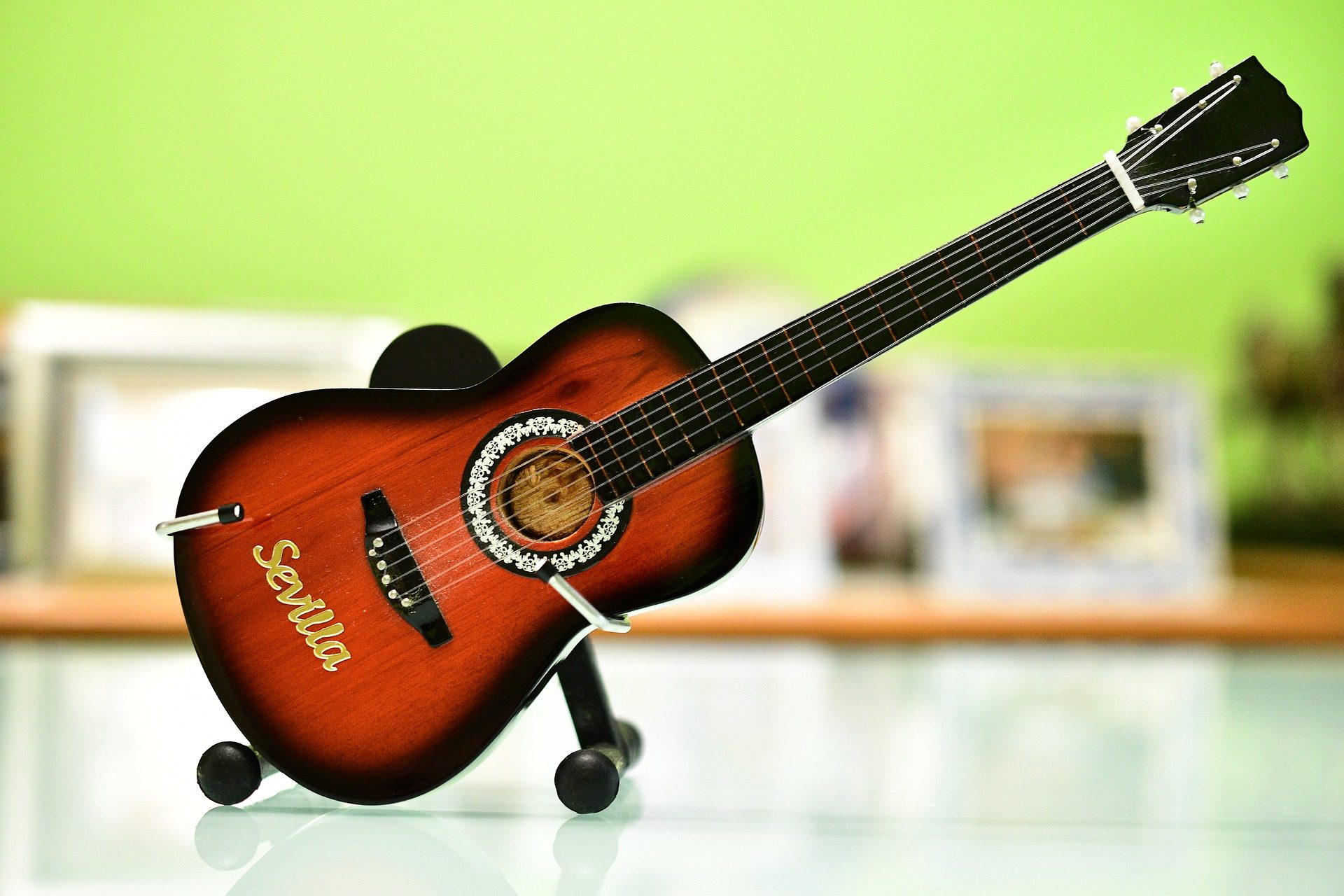A DIY guitar stand not only protects your guitar from getting knocked over or stepped on but also keeps it within easy reach so you can grab it and start playing at a moment’s notice.
If you don’t have a guitar stand, now is the time to make one! A DIY version is a great way to save money, and it can be done in just a few simple steps.
In our previous article, we shared with you how you can make a DIY rope shelf in simple steps. But today, we will show you how to make a DIY guitar stand using materials that are commonly found in most homes.
Without further ado, let’s jump right in!
Contents
- 1 Materials Necessary For The Project;
- 2 Tools Necessary For The Project
- 3 Step-By-Step Guide On How To Make A DIY Guitar Stand
- 3.1 Step 1: Engrave Your Favorite Quote
- 3.2 Step 2: Attach Template Using Adhesive Spray
- 3.3 Step 3: Cut The Wood Using A Jigsaw
- 3.4 Step 4: Sand It Into Shape
- 3.5 Step 5: Cut The Other Half And Flush-Trim It
- 3.6 Step 6: Install The Hinges
- 3.7 Step 7: Paint Or Stain The DIY Guitar Stand
- 3.8 Step 8: Attach The Felt Bumpers
- 4 Conclusion
Materials Necessary For The Project;
– 1 x 12 – 2 feet long
– Hinge
– Felt strips
– Leather cord
– Finish
– Spray Adhesive
Tools Necessary For The Project
The good thing about this project is that you won’t need any special tools. Actually, most of the tools you will need are probably already in your home, especially if you are a DIY enthusiast.
– Impact driver/ Drill
– CNC Router (Optional)
– Jigsaw

Step-By-Step Guide On How To Make A DIY Guitar Stand
Step 1: Engrave Your Favorite Quote
If you want to make your DIY guitar stand extra special, why not engrave a favorite quote on it? This is a simple process that can be done with a CNC router. As simple as it may look, a quote on the side of your DIY guitar stand will make it truly one-of-a-kind.
Ensure that the quote is big enough to be legible from a distance, and center it on the side of the DIY guitar stand so that it is visible when the stand is in use. But again, if don’t have access to a CNC router, or don’t see any need for writing anything on your DIY guitar stand, you can move on to the next step.
Step 2: Attach Template Using Adhesive Spray
If you’re using a template to create the shape of your DIY guitar stand, attach it to the wood using spray adhesive. Make sure that the template is centered on the wood, and then press it down firmly so that it sticks in place.
To ensure that it sticks in place firmly, you’ll need to apply the adhesive spray to both the template and the wood. Once the adhesive has dried, you’re ready to move on to the next step.
The shape of the template will depend on what shape of DIY guitar stand you want to make. You can find a variety of DIY guitar stand templates online, or you can create your own.
Step 3: Cut The Wood Using A Jigsaw
Once the template is securely in place, use a jigsaw to cut out the shape of the DIY guitar stand. Be sure to cut along the lines of the template, and make sure that you cut out all of the pieces that make up the stand.
Make sure that you cut out the shape as accurately as possible, and take your time while doing so. A sloppy job will only lead to frustrations down the road. If you’re not confident in your abilities to use a jigsaw, you can always get someone else to do this for you.
Step 4: Sand It Into Shape
Now that the basic shape of the DIY guitar stand is cut out, it’s time to sand it into its final form. This can be done with a belt sander, or by hand.
If you’re using a belt sander, make sure that you use medium-grit sandpaper to smooth out the edges of the DIY guitar stand. If you’re doing it by hand, use fine-grit sandpaper to get the same results.
Once you’re satisfied with the shape of the DIY guitar stand, move on to the next step.
Step 5: Cut The Other Half And Flush-Trim It
Cut the other half of the DIY guitar stand using the same template that you used for the first half. Once it’s cut out, use a flush-trim bit on a router to make sure that the two halves of the stand are identical.
This is an important step, as it will ensure that the DIY guitar stand is symmetrical. If the two halves are not identical, it will be very noticeable and will make the stand appear to be unbalanced.
Step 6: Install The Hinges
With the two halves of the DIY guitar stand cut out and trimmed, it’s time to install the hinges. This is a simple process, but it’s important to do it correctly.
Measure and mark the location of the hinges on the DIY guitar stand, and then use a drill to make pilot holes. Once the pilot holes are drilled, install the screws that come with the hinges.
Make sure that the screws are tight, but don’t over-tighten them, as this can damage the wood. If you’re not sure how tight to make the screws, just go until they’re snug.
Step 7: Paint Or Stain The DIY Guitar Stand
Now that the DIY guitar stand is put together, it’s time to give it a finish. This can be done with paint or stain, depending on your preference.
If you decide to paint the DIY guitar stand, make sure that you use high-quality paint that is designed for wood. Apply the paint in thin coats. Then, allow time so that each coat dries up completely before applying the next.
If you decide to stain the DIY guitar stand, make sure that you use a high-quality stain. Apply the stain with a clean cloth, and make sure that you wipe off any excess. Allow the stain to dry completely before moving on to the next step.
Step 8: Attach The Felt Bumpers
Finally, attach the felt bumpers to the bottom of the DIY guitar stand. This will protect your guitar from scratches and dings.
Simply peel off the backing and stick the bumpers in place. Make sure that they’re evenly spaced, and press them down firmly so that they stay in place.
There you have it! Your very own DIY guitar stand. Now you can safely and securely store your guitar, without worrying about it getting damaged.
You can use this stand for storing almost any type of guitar, whether it’s an acoustic guitar, electric guitar, or even a bass guitar.
Conclusion
Building a DIY guitar stand is a great way to save money, keep your space organized, and your guitar in good shape. And yes, it’s also a great project for anyone who enjoys working with wood. It’s a relatively simple project that can be completed in just a few hours, and it’s something that you’ll be able to use for years to come.


